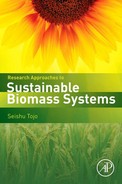Preface
Our present life depends largely on burning fossil fuels for energy, but reserves of fossil fuels may be exhausted in the near future if the current trend of fossil fuel consumption continues. Additionally, burning fossil fuels is actually returning the CO2 that had been fixed by ancient organisms eons ago to the atmosphere; the Intergovernmental Panel on Climate Change (IPCC) has warned that human consumption of fossil fuels is increasing the atmospheric CO2 concentration so that the resulting greenhouse effect may seriously impact global climate and human life in the near future. Hence, new energy resources are being explored as substitutes for fossil fuels.
Use of atomic energy had been expected to be a safe and reliable energy source because it emits much less CO2. However, since the nuclear disaster in the aftermath of the 2011 earthquake and tsunami in Japan, the safety and reliability of atomic energy has been questioned, and the expansion of atomic energy is being reconsidered in many countries.
Under these circumstances, many countries are planning to increase the use of renewable energy in the near future. Biomass energy has some advantages as compared with other renewable energy sources such as solar and wind power. Many forms of energy, e.g. heat, liquid and gas fuels, and electricity can be easily derived from various types of available biomass, including forestry by-products, plant residues from cropped fields, plant by-products created by food-processing industries, and animal and food waste, as well as plants grown and harvested mainly for energy.
Biomass energy is carbon neutral. Although using grain for energy may compete with food, such competition can be avoided if liquid fuels are derived from lignocelluloses that are abundant in various biomass materials from forests and fields as either raw biomass or reused woody products. Growing and using biomass resources provide opportunities to maintain and strengthen the functions of agriculture and forestry while achieving conservation of land and environments.
Biomass is unique in that it can be used not only for renewable energy generation but also for other non-energy purposes. Creation of technological and social systems is important for increasing both the potential for plants to fix solar energy and the use of biomass. Developing such systems for biomass use is one of the great challenges of this century and may facilitate the establishment of material-recycling and sustainable human societies.
Our main concern in this book is to address the ways in which industries generating energy from sustainable biomass may be established and become commercially viable. Some hold the view that only large-scale enterprises are likely to be successful. The high volume of biomass required by such industries is indeed available in some countries, for example corn in the USA and sugar cane in Brazil. However, this is not always the case in other countries. Many Asian communities (including those in Japan) are local to some degree because they are separated from one another by major landform features such as mountain ranges. Transporting biomass from such regions to a centralized processing hub would be economically prohibitive. Thus, there is a need to establish techniques suitable for small-scale application for using the energy locked into biomass, and improving the efficiencies of biomass production, harvesting, energy conversion, and energy use are equally important. Further, the improvement must be sensitive to geographical restraints and the social traditions of the communities involved in order to warrant the maximum overall benefit from biomass production and use. Any successful approach must blend the talents of those working in various disciplines of natural and social sciences; this would allow sustainable biomass production to be integrated with biomass use in community settings.
This book is intended principally for graduate students, young scientists, and government officials who are interested in exploring the potential of future biomass application for renewable fuels. We emphasize the need for sustainable biomass production and use in individual communities and thus put much value on the accomplishments of both natural and social scientists in this area. Biomass production and use are outlined from the standpoint of the social systems and ecosystems in Chapters 1–3. Chapters 4–13 deal with efficient and sustainable biomass production, energy production from biomass, and other uses of biomass. The methods that may be used to evaluate the success of biomass production and use, and the acceptance of such systems by the societies they serve, are outlined in Chapters 14 and 15 respectively.
We seek to not only describe the latest developments in basic science and technology, but also include relevant case studies with exciting recent research findings highlighted in “boxes”. We hope that these “real-world” examples will make our contentions easier to understand, and that readers will learn the basic science and technology of biomass creation and use so that they will become committed to the principle of sustainability.
